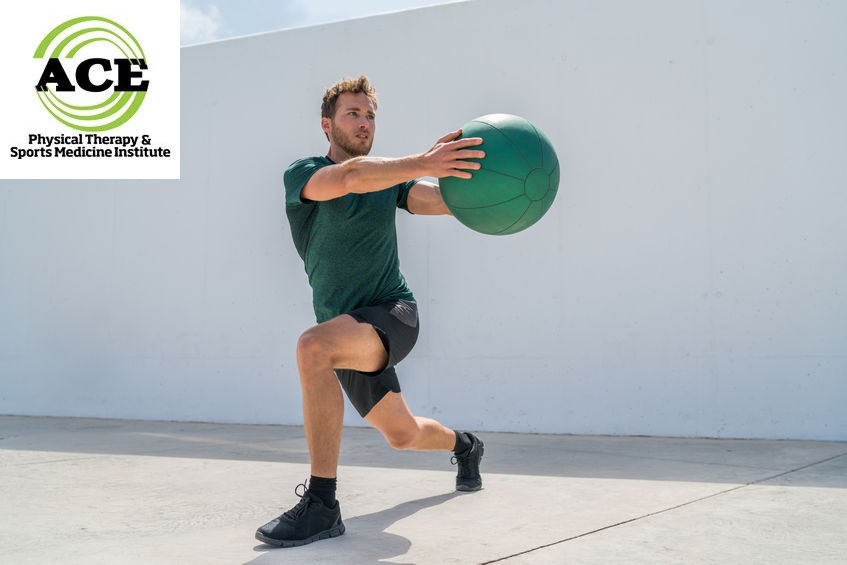BENEFITS OF INJURY PREVENTION PROGRAMS

Tid Bits of Info
- Strength training consistently can reduce the occurrence of injuries by 1/3 and over-use injuries by 50%.
- Injuries that require a hospital stay or surgery can be costly, estimates of $8-10,000 dollars on average.
- It is estimated that 85-90% of all college athletes suffer an injury of some type during their careers.
- Women athletes are 5x more likely to sustain a non-contact ACL injury than a male athlete.
- Seek the advice and treatment of a Physical Therapist if you injure yourself.
Healthcare professionals regularly stress how injury prevention programs can help individual athletes and entire teams by reducing injuries and increasing performance. Often their words fall on deaf ears. Instant performance pressure can cause many coaches to focus on strategic and specific training instead. Knowledgeable healthcare professionals can help coaches implement research-based training that will help reduce injuries while still achieving long-term goals.
All too often the amount of time spent on these programs is shortened in favor of more sport-specific or strategic training. Unfortunately, most athletes suffer an injury at some time in their career that “sidelines” them from the sport that they love. The “next person up” mentality can only go so far, and it may mean losing a prize player or numerous players to injuries, resulting in overall losses and a failed season.
Most coaches want to coach their sport and not waste time on training exercises and routines. The benefits of injury prevention programs are spelled out all of the time but the stress and demands put on coaches and managers to win oftentimes supersedes the implementation of these programs. It would behoove all programs to utilize a knowledgeable, healthcare professional to install a general injury prevention program for the entire squad. This program would cover the basics and some specific exercises that are designed to prevent the most common injuries that occur in their sport. More specific programs are ideal, but designing a program for each member of a team might be too aspirational to consider. If it is possible, this would be the most effective and assuredly reduce the frequency of injuries and enable the team to compete with the “whole” team.

Numerous injury prevention programs have been touted to help reduce or eliminate injuries but the single best way to do this is to maintain a consistent strength development program. Stretching programs alone have never been linked to the reduction of injuries and if done incorrectly could cause an injury. Many programs are designed to enhance the neuromuscular activity (proprioception within an individual with the hopes that an improved and “fine-tuned” neural communication between the nervous system and musculature will help to reduce the frequency of injuries. These programs have been shown to be successful but not to the extent of a well-designed, sport-specific strength program. The ultimate program would include all aspects of the above programs. It has been reported that a solid strength program can reduce injuries by as much as 1/3 and over-use injuries by 50%. These numbers are quite significant when considering the amount of time and competitions that could be “saved” by each team or player over the course of a season. In the professional ranks, this correlates to less money lost secondary to having the “whole” team available for nearly every competition/game. It has been reported that there is a strong correlation between the reduction of injuries and a higher success rate of a given team.
When a coach or manager considers implementing an injury prevention program, they should seek out a very knowledgeable resource because in many instances there is no need to do a lot more but the team needs to be more sport-specific which has been proven to be more effective. Performing an ACL prevention program for a sport that rarely has the occurrence of a torn/ruptured ACL would be a waste of time. On the other hand, performing 15-20 minutes of strengthening and proprioceptive training designed to prevent ACL injuries in a sport that the occurrence of ACL injuries is high would be a great investment in the team time.
Obviously, the ideal way to settle the tug of war that exists between sport-specific practice time and injury prevention training exercises would be to have the player perform a lot of the injury prevention program during their regular training/conditioning routine. If they are educated with the proper routine they will most likely reduce the chances of injuring themselves when they compete in their sport.
Injury prevention programs work well to reduce injuries in a given sport if they are designed to address the most commonly occurring injuries in that sport. They can be performed during practice time or in combination with the regular training sessions and they should include a combination of strength, proprioception, and stretching exercises.
























